Rock formations are truly Mother Nature’s art. These ancient sculptures were formed by thousands of years of weather and erosion—they’re too weird and wonderful to have been made by the human mind. This list came straight from the Earth herself. From giant rocks that resemble elephants to whole national parks made up of rocks that look an awful lot like goblins, here are some of the most incredibly strange rock formations in the world.
1 / 22
The formation, movement and transformation of rocks results from Earth’s internal heat, pressure from tectonic processes, and the effects of water, wind, gravity, and biological (including human) activities. The texture, structure, and composition of a rock indicate the conditions under which it formed and tell us about the history of the Earth. We select for you the weird and unusual rock formations all over the world.
2 / 22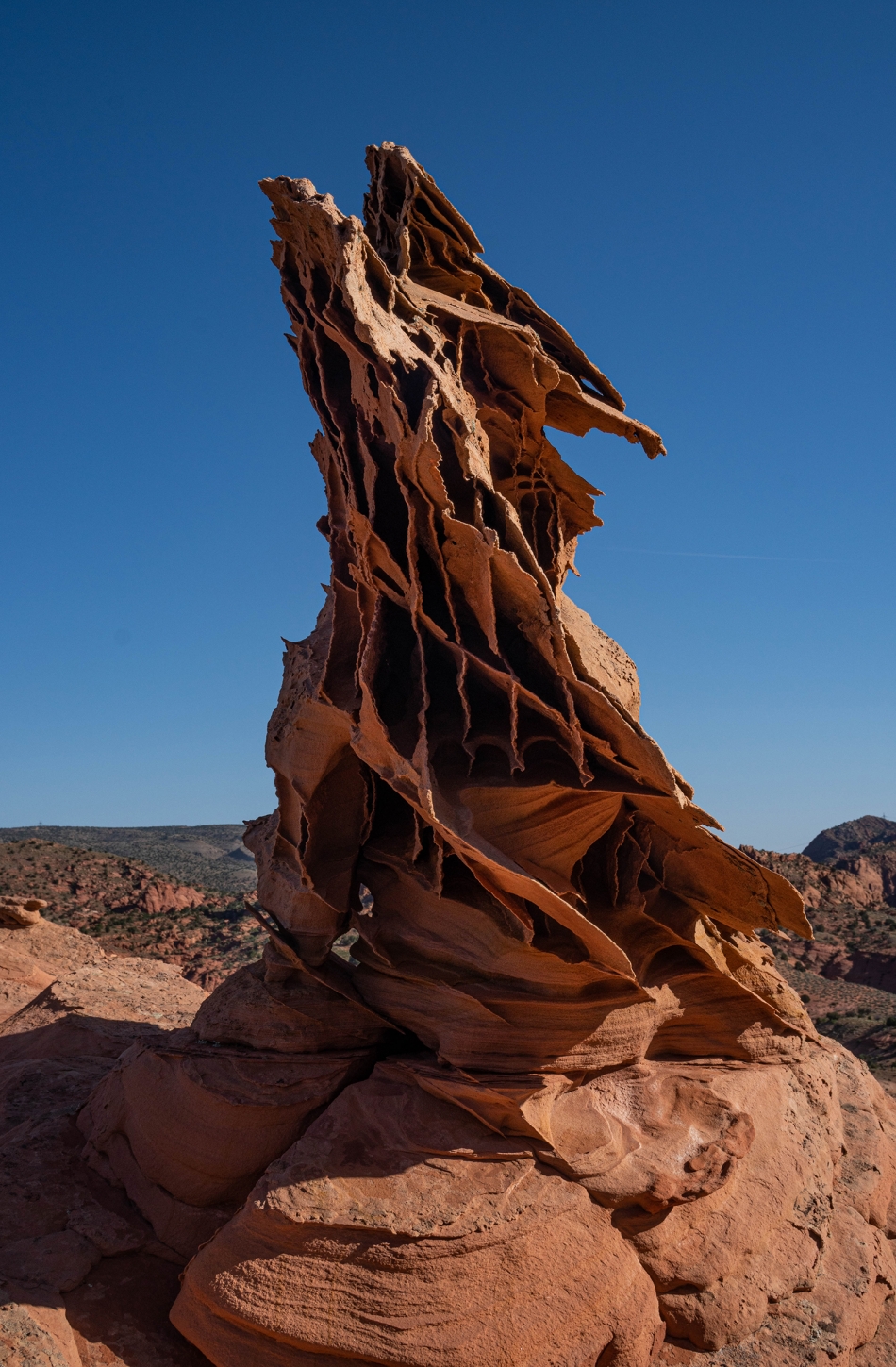
Edmaier’s Secret in Paria Canyon-Vermilion Cliffs: The middle Paria River valley, around the north edge of Vermillion Cliffs National Monument, is a particularly scenic and photogenic region, which includes several well-known sites in close proximity such as Buckskin Gulch, White Pocket, Coyote Buttes and the Wave, the Paria Rimrocks and the deep Paria Gorge. Most of the bedrock is Navajo sandstone, originally wind blown dunes, now containing, thin, differently colored, cross bedded strata, and eroded into many forms. Most of the exposed sandstone is found along the Paria and Buckskin corridors, extending a mile or so either side, and off-trail explorations can reveal many pretty formations.
3 / 22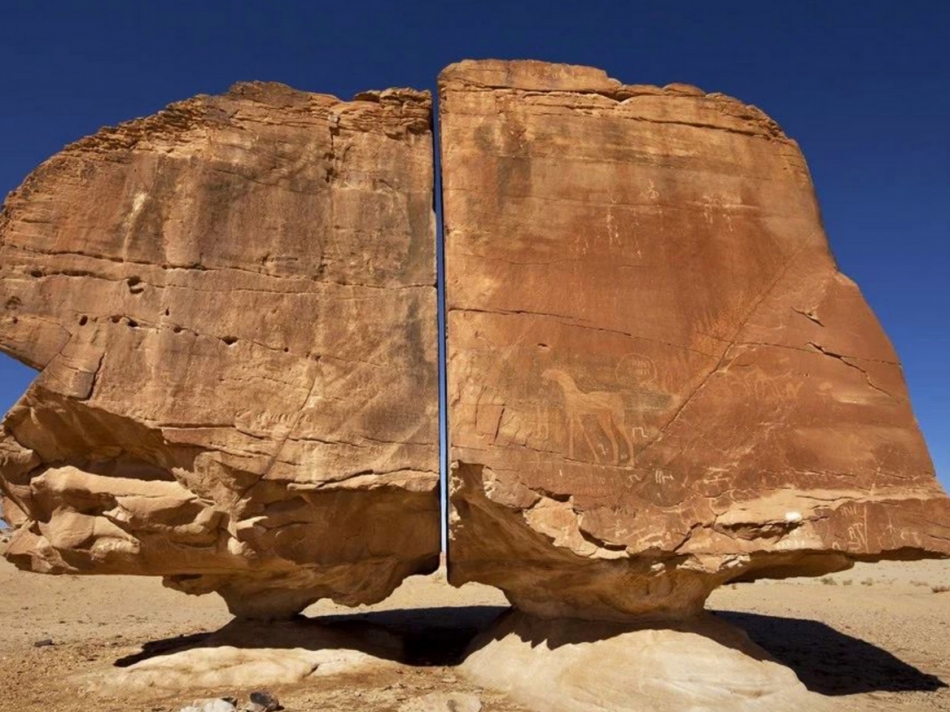
Al Naslaa Rock: The Al Naslaa rock is made up of two sandstones supported by a naturally-formed pedestal with a perfect slit down the middle. While the exact cause of the split has yet to be determined, windblown sand and periodic rain could have created the unusual shape.
4 / 22
Giant’s Causeway in Ireland: The Giant’s Causeway is an area of about 40,000 interlocking hexagonal basalt pillars formed by an ancient volcanic fissure eruption. It takes its name after a giant called Fionn mac Cumhaill in Gaelic mythology. According to the myth, Fionn built the causeway across the North Channel after he was challenged into a fight by the Scottish giant Benandonner. So, the causeway kind of served as a path between Scotland and Ireland. Because of the fact that there are almost identical basalt columns across the sea at Fingal’s Cave, it is possible that the legend was inspired by this similarity.
5 / 22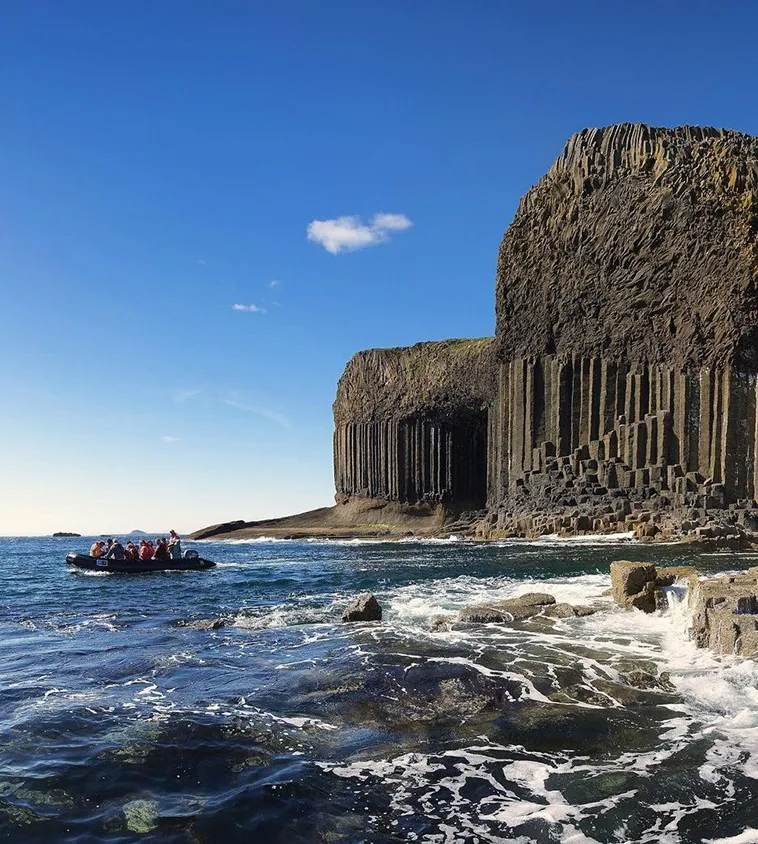
Fingal’s Cave in Scotland: Fingal’s Cave is known for its breath-taking hexagonal columns and mysterious melodic sounds once inside. While Scotland is bountiful of natural wonders, there is this one extra special place one should visit at least once in their life. Just off the shores of the West Coast lies the uninhabited small island of Staffa, home to the majestic Fingal’s Cave, which is also considered the most beautiful sea cave in the world.
6 / 22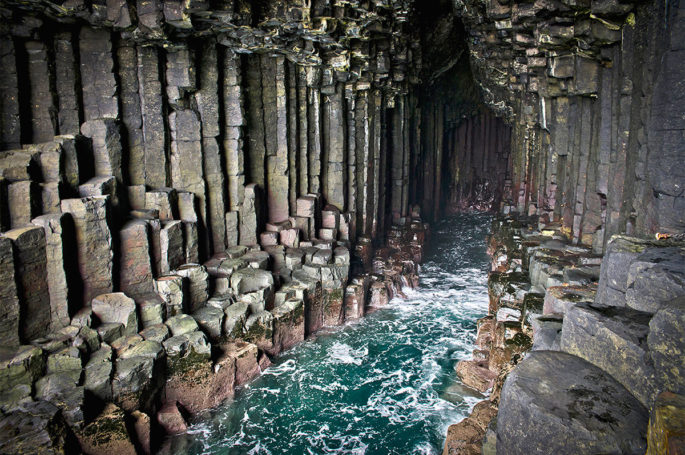
Staffa is located in the Inner Hebrides in Argyll and Bute about six miles away from the Isle of Mull and is a tiny uninhabited island around half a mile long and a quarter of a mile wide. Home to the mysterious Fingal’s Cave with the famous hexagonal columns, the island is fairly hard to access and can usually only be reached between April and September.
7 / 22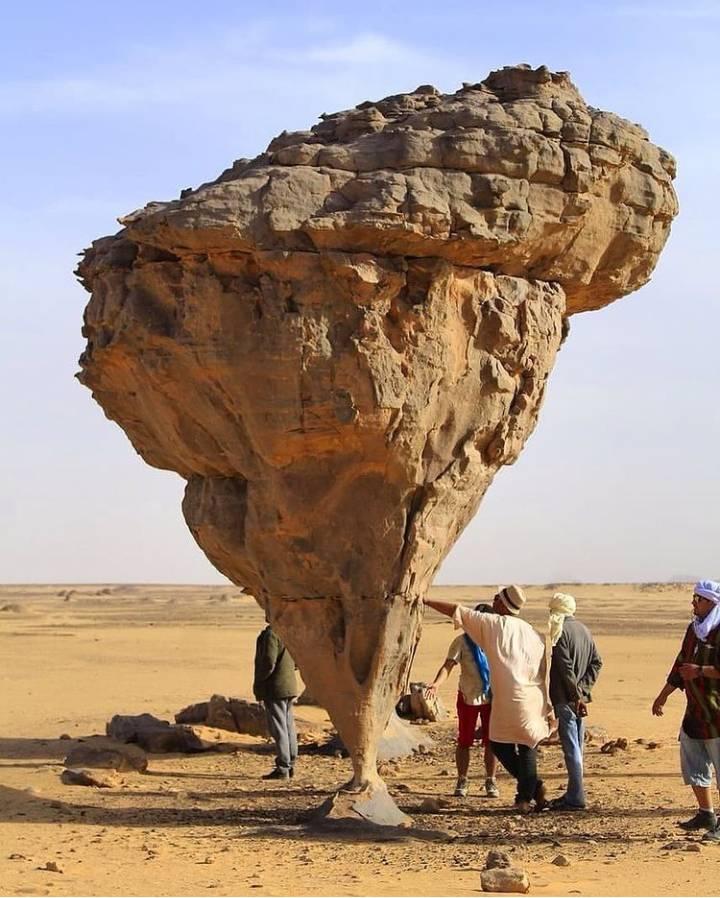
Pinnacles At Gunung Mulu National Park: The Gunung Mulu National Park consist of a number of impressive geological formations caves and pinnacles. There are three mountains within the park: Mount Mulu standing at 2,376 m high (7,795), Mount Api at 1.750m (5,740ft), and Mount Benarat at 1,858m (6,096ft). These limestone pinnacles are located among the jungle on the slopes of the upper part of Mount Api. The unique, razor-like, sharpform extend to a height about 50m from the ground.
8 / 22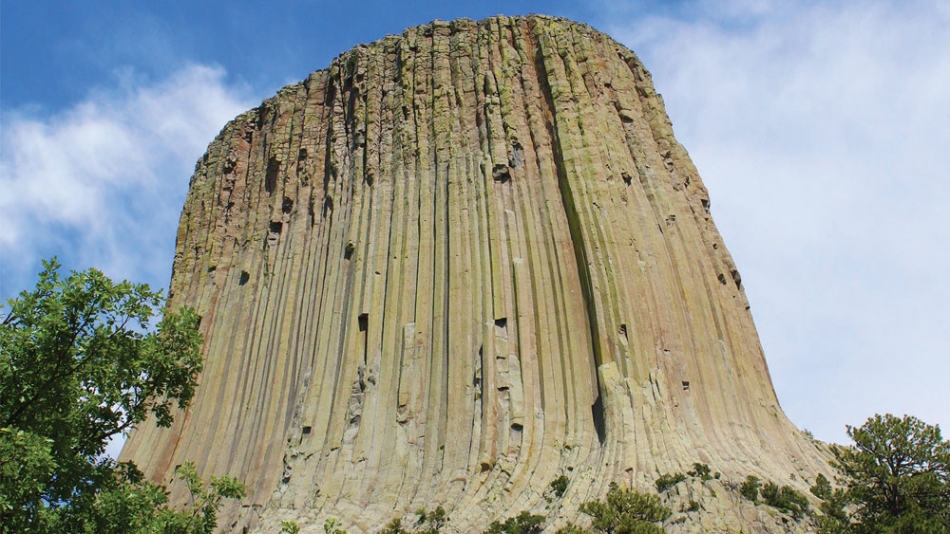
Devils Tower in Wyoming: Also known as Bear Lodge Butte, Devil’s Tower was the first national monument of the United States, established by President Theodore Roosevelt in 1906. During the Paleocene Epoch (56 to 66 million years ago) magma rose through the crust and intruded into the existing sedimentary rock layers. As the magma cooled, the hexagonal columns were formed, and rain and snow exposed the Devil’s Tower by eroding the sedimentary rock through time.
9 / 22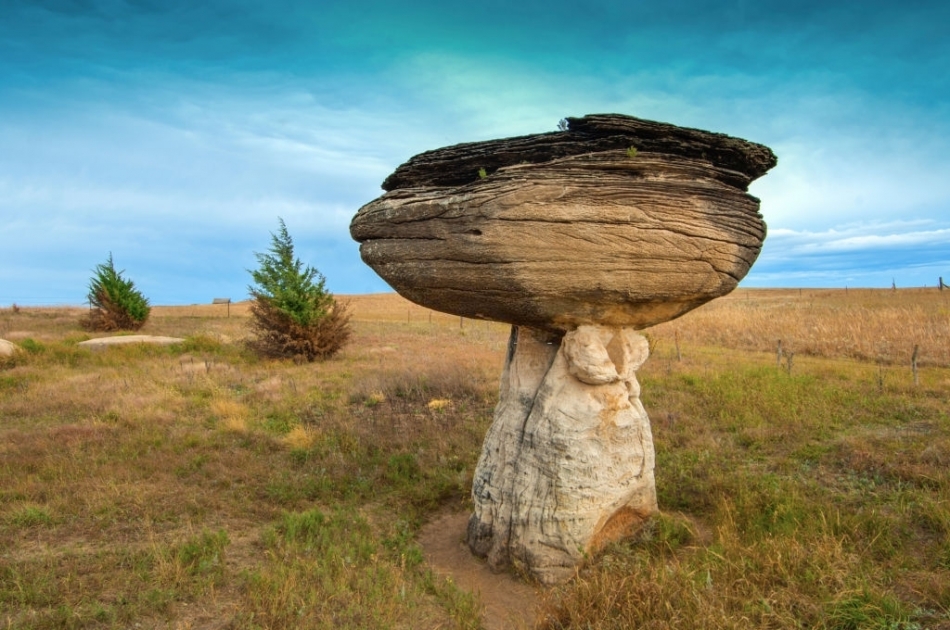
Mushroom Rock State Park, Kansas, United States: Mushroom Rock State Park, located in the Smoky Hills region of north-central Kansas, is famous for its mushroom rock formations. These rocks are the residue of beach sands and sediments of the Cretaceous Period, about 144 to 66 million years ago. Here the Mushroom Rocks formed by concretization of sandstone and sedimentary rock through cementing agent calcium carbonate. There are two mushrooms and a giant shoe rock, as well as several other rock formations. The largest rock is 27 feet in length. This park is “one of the 8 wonders of Kansas Geography.”
10 / 22
Totem Pole at Cape Hauy in Tasmania, Australia: Tasmania National Park is a popular rock climbing area famous for its igneous dolerite pillars. These rare hexagonal pillars were formed when the extruding magma cooled over a short span of time.
11 / 22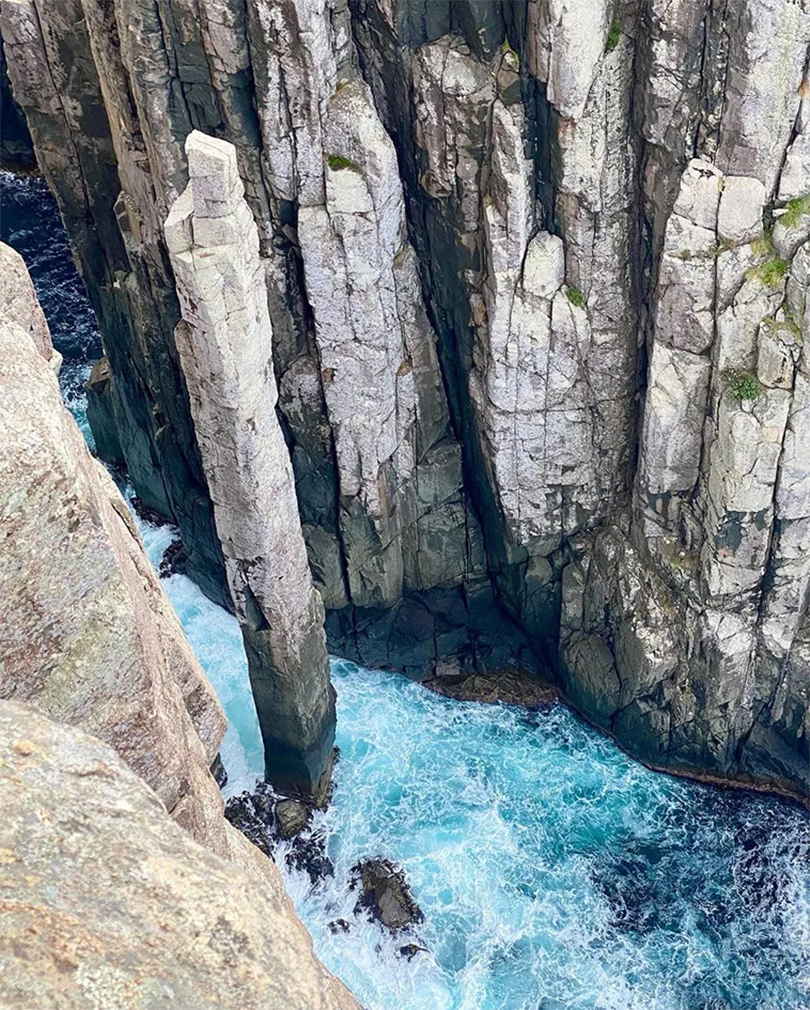
Among the natural beauties Tasmania has to offer, there is a wonder of nature that has been suitable named The Totem Pole, which is part of the Tasman National Park. Located at Cape Huay, this amazing structure is a coastal stack, or sea stack, which peeks at the edge of the Tasmanian coast. Its 65 meter (~213 feet) height makes it a tempting attraction for climbers all over the world.
12 / 22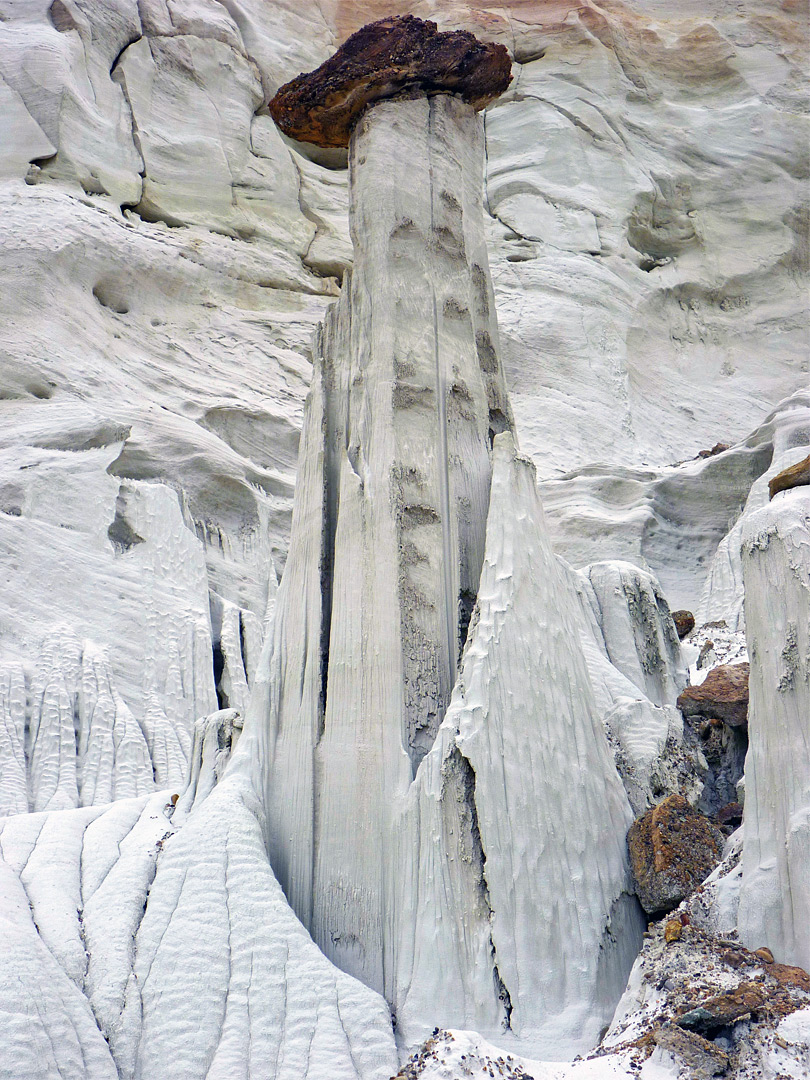
Waheap Hoodoo: The hoodoos and contrastingly colored sandstone of the Paria Rimrocks have become relatively well known, since they lie beside a main road (US 89) and are accessed by two BLM-maintained trailheads. Similar areas nearby are less publicized and require more effort to access, either by driving along rough tracks or cross-country hikes of several miles. Probably the best group is known as the Wahweap Hoodoos, situated along the base of the cliffs on the west side of Wahweap Creek, about 5 miles north of the tiny settlement of Big Water.
13 / 22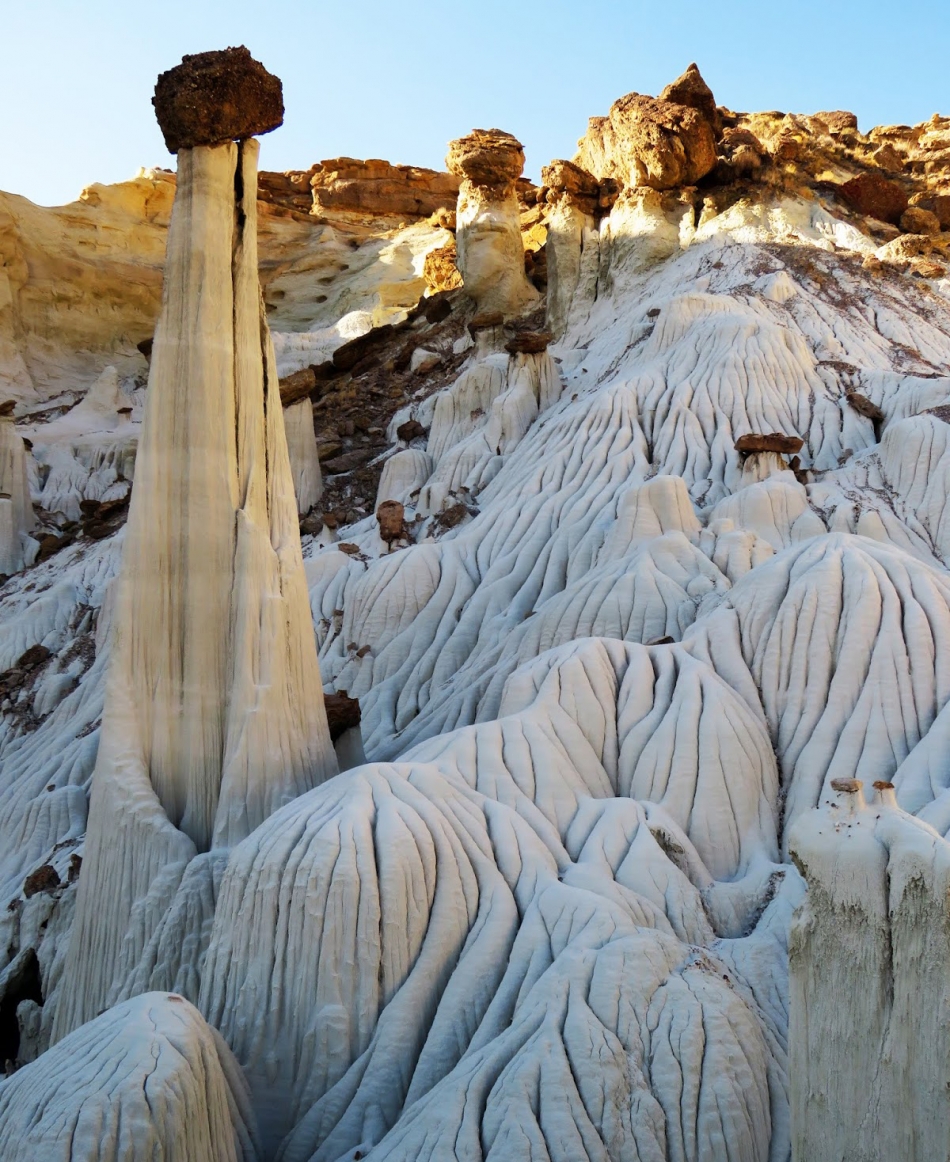
The soft entrada sandstone bedrock hereabouts is variously grey, light brown, very pale green or pure white in color and forms hoodoos ranging in shape from broad and short to tall, slender and tapering, topped either by dark sandstone blocks or unusual boulders of purple conglomerate, composed of small pebbles bonded together. The formations could once be reached by driving along a 4WD track that forks east off Cottonwood Canyon Road, but this is now closed to vehicular traffic and instead the usual approach route is up Wahweap Creek starting at Big Water, a sometimes sandy hike of 4.6 miles. The seasonal creek flows through a wide, shallow canyon, which away from the hoodoos is uninteresting apart from several very short slot canyon tributaries, on the east side.
14 / 22
Mushroom Rock in Cappadocia, Turkey: Cappadocia became famous for its unique landscape of valleys and strange rock formations, known as “fairy chimneys”. The formation of this weird landscape taking place during the third geological period, when 3 volcanoes situated on the edges of this region began erupting regularly. The deposits of volcanoes ash, lava, and basalt laid the foundations of this landscape.
15 / 22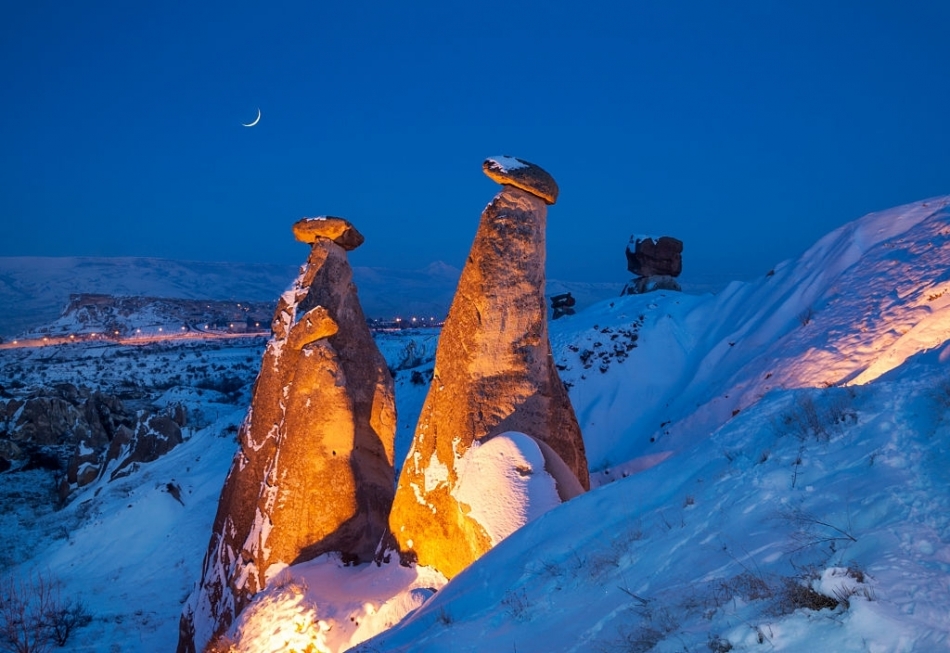
Then, wind, temperature, rainfall, weathering, snow, and rivers created the Cappadocia’s unusual and unique rock formations. Hoodoos and mushroom-shaped rocks are widely found in this region. Some very unique mushroom rocks are also found beyond fairy chimneys and surrounding Cappadocia.
16 / 22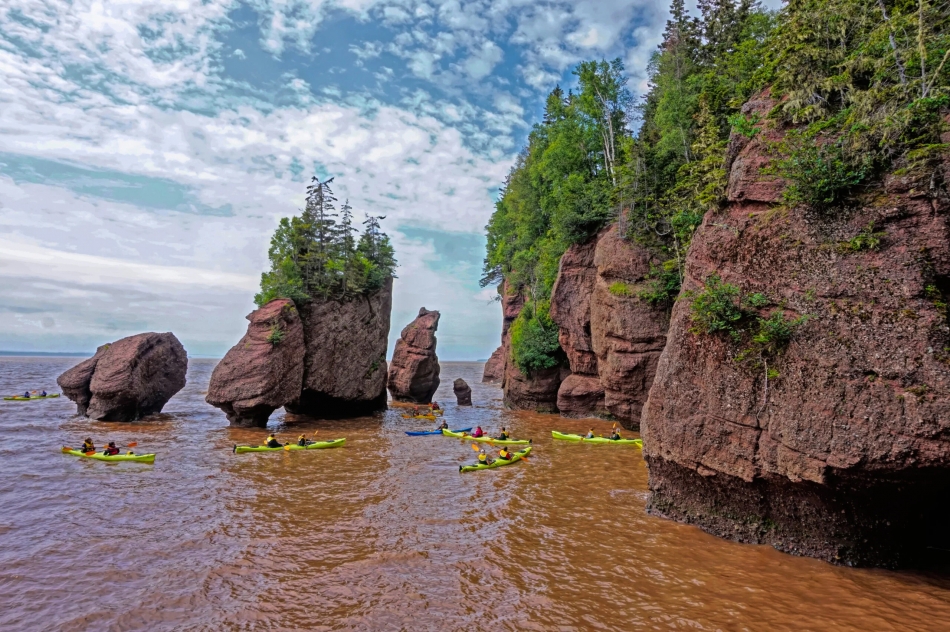
Hopewell Rocks: These rocks located in the Hopewell Rocks Ocean Tidal Exploration Site, stand at 40-70 feet high and are the result of tidal erosion. As the Bay of Fundy is subject to extreme tidal range, the base of the rock formations is flooded twice a day.
17 / 22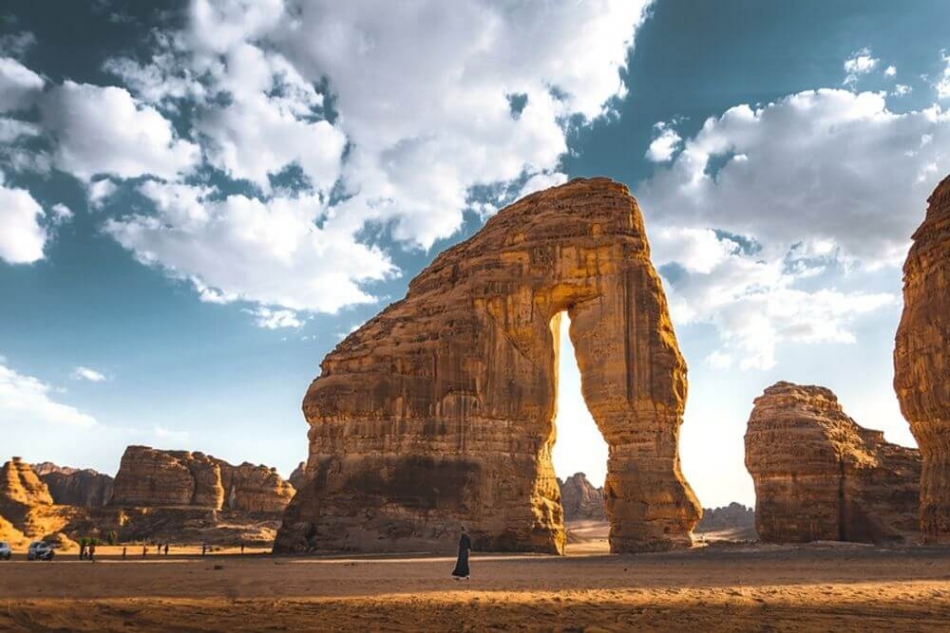
Elephant Rock, Al Ula: Renowned as the Elephant Rock, Jebel Al-Fil is a natural rock formation that resembles an elephant. Located in the Madinah region, Al Ula is a city based on the north-western side of the Kingdom of Saudi Arabia. Well-known for stunning rock outcroppings, Al Ula is nothing short of a natural museum. A fine specimen of nature’s architectural brilliance, these beautiful spots result from the erosion process, which went on for millions of years. The formations have unique colors, shapes, and structures. The city provides several adventure and biking trails such as Heritage Oasis Trail, Al Ula Hidden valley hike, the Ridge walk hike, Rock Art Hike, Twisted Maze hike, etc. Adventure lovers can head on to the 4×4 safari, buggy tours, camel riding, and rock climbing offered in various areas of the city. Tourists also visit the city for the historical heritage site of Hegra (UNESCO World Heritage Site).
18 / 22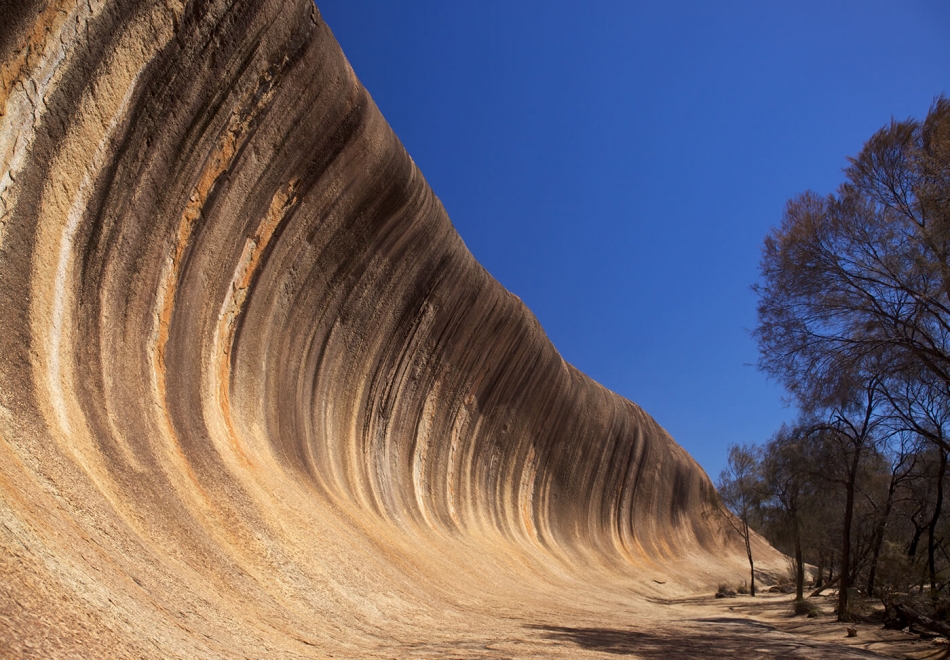
Wave Rock: Wave Rock is exactly what it sounds like, but dear god, looking at it is…something else. The thing looks like an actual huge, curved wave, about to crash on top of you, except it’s made of granite rocks dating back around 2.63 billion years. And although it looks menacing, it’s actually just the side of Hyden Rock, a hill located in Hyden Wildlife Park, which is a nature preserve in Australia.
19 / 22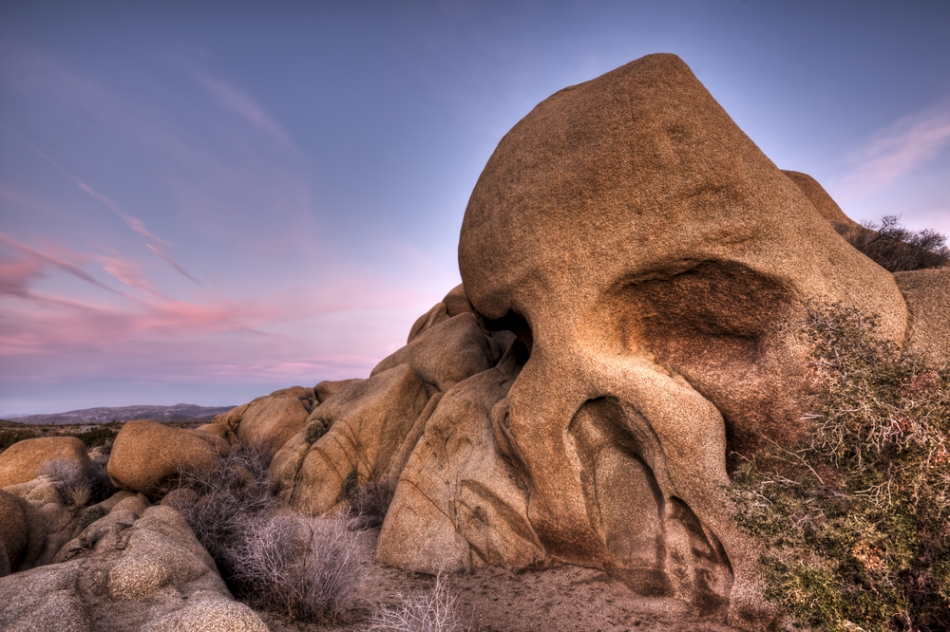
Skull Rock: One of the most well-known strange rock formations in the world, Skull Rock is located in the serene desert of Joshua Tree National Park in Southern California, just outside of Palm Springs. It is, clearly, a rock in the shape of a huge skull. The skull was formed over the years by rain eroding its surface, including the eye sockets, where water became trapped long enough to erode the rock into little pits. The large skull is a favorite among desert hikers and walkers visiting Joshua Tree National Park.
20 / 22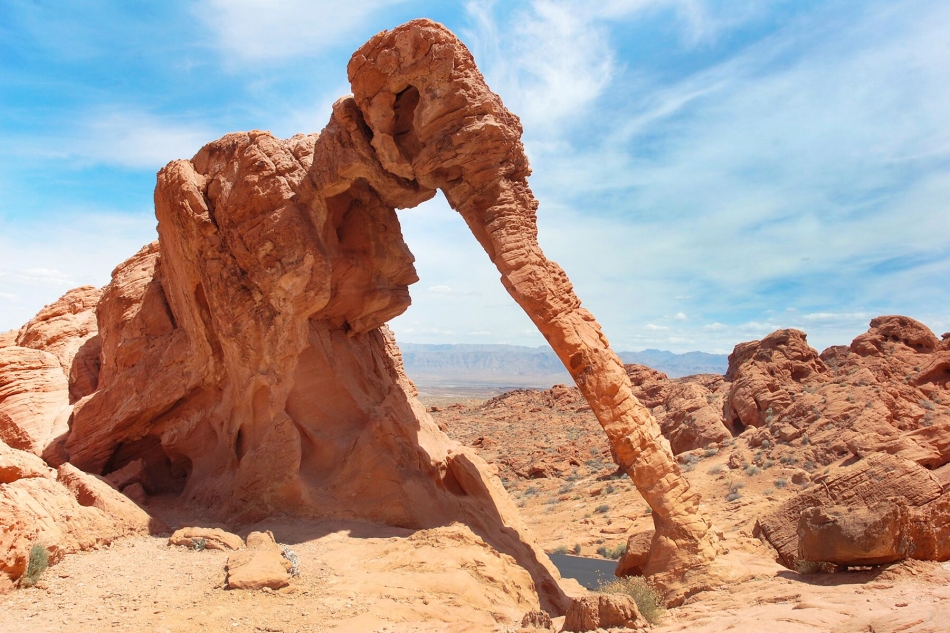
Elephant Rock at Valley of Fire State Park: Millions of years ago, Valley of Fire State Park was submerged under the sea, and now? Well, now it’s: rocks! And interesting rocks, at that—a sea of rocks, if you will. And one of the most interesting of these rock formations is located right next to the east entrance of the park and it is shaped like a gigantic elephant. The most prominent element to this formation is the “trunk,” as it’s the easiest thing to make out initially, however, if you look closely enough, you will be able to see the body and legs, as well.
21 / 22
The Eye of the Sahara: This rock formation formally known as Richat Structure can only be seen from space, but does that make it any less bonkers? Absolutely not. Looking like a bonafide bullseye (as well as a regular eye) the size of a country, the eye of the Sahara is a prominent circular feature located in the massive Sahara desert that has been observed by fellows up there in space (astronauts, not aliens) for many years. In actuality, it’s a 30-mile dome-shaped structure formed by uplifted rock that eroded over time (and not from a meteorite, as originally presumed).
22 / 22




